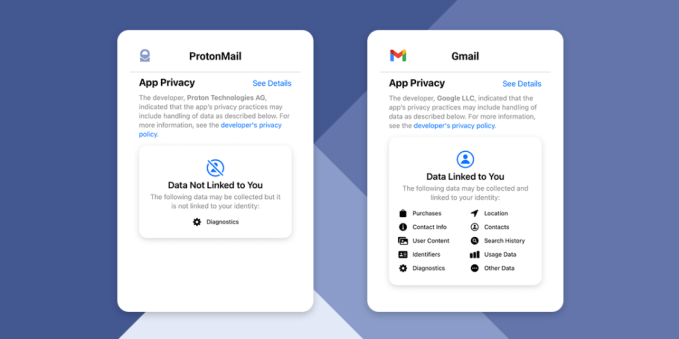Rachel Blank has a history with hormones. The entrepreneur left her investment job at General Catalyst to join a portfolio company they had been backing since its seed round: Ro. Blank was tasked with growing Rory, a product line for menopausal women.
But Blank left her director position at the health tech unicorn, last valued at $5 billion, to start her own company in women’s hormonal health. Today, that startup is launching out of stealth with millions in venture-backing and more than 35,000 women in its community.
Allara is an early-stage, New York-based startup that wants to help women better manage polycystic ovary syndrome, or PCOS. The reproductive and hormonal condition can cause irregular periods, infertility or gestational diabetes in women, as well as acne, weight gain and excessive hair growth. And it’s far from rare, affecting some one in 10 women of childbearing age.
Along with launching today, the company told TechCrunch that it has raised $2.5 million in a seed round led by Global Founders Capital, with participation from Great Oaks and Humbition.
Allara bundles a suite of services needed to address PCOS — such as gynecologists, nutrition plans or mental health support — and gives consumers one spot to access all of the above. The company describes it as a “collaborative care management model.”
When a consumer first joins the platform, Allara asks them to go through a virtual on-boarding visit with a medical provider. That provider can arrange for labs, then review the lab work and medical history to better understand a patient’s background. Lab work, and any prescriptions, are paid for by the consumer through traditional insurance.
Then, the rest of Allara moves out of pocket. Allara charges $100 a month for access to its care team. Patients get quarterly check-ins with their providers, and have ongoing text-based access to registered dietitians to help with eating and lifestyle goals. Blank explained how Allara wants to make sure all services find ways to talk to each other, creating a patient experience where a nutritionist already knows what your OB-GYN told you and vice-versa so a care plan is centralized.

A text message between a patient and a licensed dietician. Image Credits: Allara
If it pulls it off, this is where the heart of Allara’s innovation lies: creative ways to take care of people.

Image Credits: Allara
One hurdle for Allara, and any company working on a solution for this condition, is that PCOS is hard to diagnose, and impossible to fully cure. Like many hormonal conditions, the condition looks different in everyone, which is part of the reason it’s so hard for doctors to identify. There is no blood test, and there is no pill to pop.
PCOS is currently diagnosed with the Rotterdam criteria, which means a patient must have two of the following three conditions: irregular period, excess androgen or polycystic ovaries. Some research argues that the criteria is controversial and not fully inclusive of the spectrum of how PCOS presents. For now, the Rotterdam criteria is the best method toward diagnosing.
Blank says that Allara’s goal is all about “managing risk.”
“It’s not that women with these conditions weren’t looking for a solution,” Blank said. “It’s that they’re all desperately looking for solutions, but the solutions haven’t existed yet.”
Over the past few months, Allara has been operating under a different name — Astrid — to build up interest and get feedback needed to iterate its product. Blank claims that more than 35,000 women are part of its community, either directly or on a waitlist, underscoring the demand for explicit attention on this condition. The startup recently began seeing patients.
Hormonal health grows bigger
Allara is the latest startup to bet that hormonal health is a key wedge into the digital health boom. Companies like Adyn, Modern Fertility, Tia, Veera Health and Perla Health are all working on different ways to better serve hormonal disorders.
Still, the sector remains relatively nascent compared to other health conditions. Blank chalks up part of this truth to stigma.
“There’s been a lack of understanding what women’s health means,” Blank said, explaining how society often views it as a fertility or reproductive health condition. Blank thinks that PCOS is a common thread between a multitude of conditions, from fertility, diabetes, increased risk of uterus and endometrial cancer, heartsease, anxiety and depression.
When she explains this, she said, people are able to get the market opportunity.
“How do we treat women’s healthcare in a way that their entire healthcare outcomes become better but we’re taking on the nuances of them being women?” Blank said.
Blank herself was diagnosed with PCOS at the age of 21, which came as a surprise to her.

Rachel Blank, the CEO and founder of Allara. Image Credits: Allara
“I think what made it more surprising is that my dad is actually an OB-GYN,” she said. “So even though I had grown up around women’s healthcare, and had access to the best of women’s health specialists, I even struggled with getting a process and understanding what was going on in my body.”
Blank initially joined Ro because of her passion for polycystic ovary syndrome, or PCOS. Allara is a return to, and doubling down on, her belief in the condition needing a better standard of care.
As for going solo, and not building it within Ro’s blanket of brands and massive footprint, Blank explained how her vision of specialty care and services is different from what Ro focuses on, which is largely primary care and prescription focus. Notably, Ro did acquire Modern Fertility, a hormonal health company, for north of $225 million, last month.
“PCOS was just part of my personal story — not the vision for Rory,” she said. “Allara is not a primary care platform — it’s a specialty care platform, developing new clinical care models for complex women’s health conditions like PCOS. Imagine it as a place a primary care platform might refer a patient to if they discover she has more complex needs than they can currently serve.”


 “It was not as important as hiring, structuring a ‘single you’ of the organization,” he said. (Ian’s pictured here to the right.) Similar to the great analytics tools that have been built for developers, sales teams and others, “What I wanted was people analytics,” he said. “I wanted to understand my team.”
“It was not as important as hiring, structuring a ‘single you’ of the organization,” he said. (Ian’s pictured here to the right.) Similar to the great analytics tools that have been built for developers, sales teams and others, “What I wanted was people analytics,” he said. “I wanted to understand my team.”